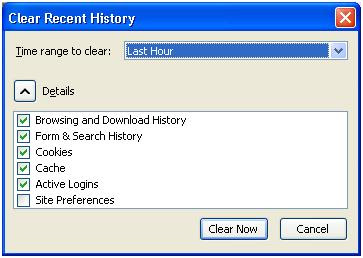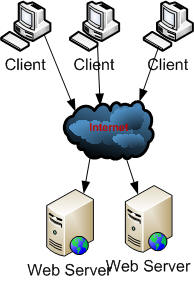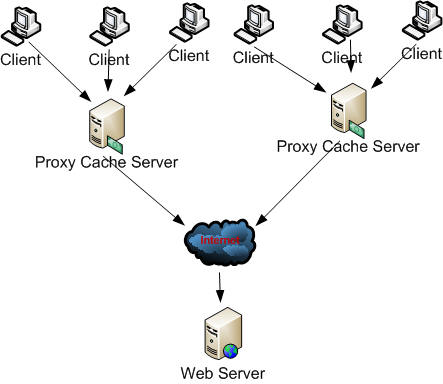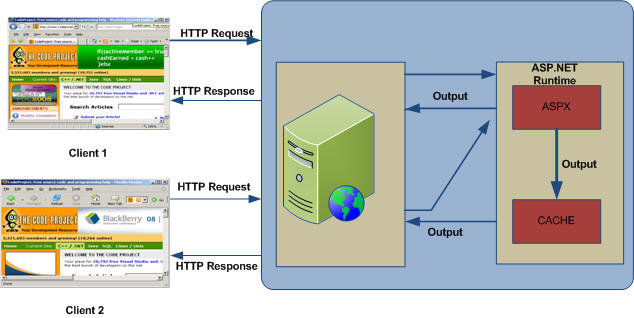_______________________
1. Cookies & Cache
What is a cookie?
A cookie, also known as a web cookie, browser cookie, and HTTP cookie, is a piece of text stored on a user's computer by their web browser.
What is it for?
A cookie can be used for authentication, storing site preferences, shopping cart contents, the identifier for a server-based session, or anything else that can be accomplished through storing text data. A cookie consists of one or more name-value pairs containing bits of information, which may be encrypted for information privacy and data security purposes. The cookie is sent as a field in the header of the HTTP response by a web server to a web browser and then sent back unchanged by the browser each time it accesses that server. Cookies may be set by the server with or without an expiration date. Cookies without an expiration date exist until the browser terminates, while cookies with an expiration date may be stored by the browser until the expiration date passes. Users may also manually delete cookies in order to save space or to address privacy issues. As text, cookies are not executable. Because they are not executed, they cannot replicate themselves and are not viruses. However, due to the browser mechanism to set and read cookies, they can be used as spyware (see zombie cookie and evercookie for more details). Anti-spyware products may warn users about some cookies because cookies can be used to track computer activity—a privacy concern, later causing possible malware. Most modern browsers allow users to decide whether to accept cookies, and the time frame to keep them, but rejecting cookies makes some websites unusable.
What is cache?
In computer engineering, a cache is a component that transparently stores data so that future requests for that data can be served faster.
What is it for on the web?
Web caching is a technique where we can store frequently used data and Web pages are stored temporarily on local hard disks for later retrieval. This technique improves access times when multiple users access a Web site simultaneously or a single user accesses a Web site multiple times. Caching for Web applications can occur on the client (browser caching), on a server between the client and the Web server (proxy caching / reverse proxy caching), and on the web server itself (page caching or data caching).
Data can be cached on a client, an intermediate server (e.g. a proxy or on the web server itself. Caching in a web application can be done either on client side (Client Browser), In between Client and Server (Proxy & Reverse Proxy Caching ) and on Server Side( Data Caching/ Page Output Caching) . So we can classify each caching location:
1. Client Caching
2. Proxy Caching
3. Reverse Proxy Caching
4. Web Server Caching
The example below is a pretty straightforward version of caching which you probably already know, e.g. a picture (such as a logo) is downloaded from a website once and each time that picture is needed in future for pages on that site, the cached logo is employed:
_________________________
2. Web Fundamentals Quiz
Time to review the quiz from last week on Web Fundamentals.
_____________________________________
3. Apple vs. Microsoft
_____________________________________
_____________________________________
3. HTML Puzzle
Inspired by the web page puzzle game notpron, I want the class to create an HTML puzzle in pairs. Your task for today is to create the first three pages.
They should be as follows:
First page: This is the introduction - you'll need a suitable image, you will then need to create a clickable area in it. This clickable area might be a door. If you are unsure how to do it, try reviewing these pages:
Second page: Try hiding a very small clickable area on the page. This might be a normal link through white text on a white background, or could be a very small image map
Third page: Try hiding a clue in the web (hidden text which is the same colour as the background. Or hide the clue in the source code. The format for HTML comments is as follows:
Use the format below for your blank HTML page which you then add to:
<?xml version="1.0" encoding="UTF-8"?>
<!DOCTYPE html PUBLIC
"-//W3C//DTD XHTML 1.0 Transitional//EN"
"http://www.w3.org/TR/xhtml1/DTD/xhtml1-transitional.dtd">
<html xmlns="http://www.w3.org/1999/xhtml" xml:lang="en" lang="en">
<head>
<title>Blank XHTML 1 Transitional Page</title>
</head>
<body>
</body>
<!DOCTYPE html PUBLIC
"-//W3C//DTD XHTML 1.0 Transitional//EN"
"http://www.w3.org/TR/xhtml1/DTD/xhtml1-transitional.dtd">
<html xmlns="http://www.w3.org/1999/xhtml" xml:lang="en" lang="en">
<head>
<title>Blank XHTML 1 Transitional Page</title>
</head>
<body>
</body>
</html>
Make it difficult!











No comments:
Post a Comment